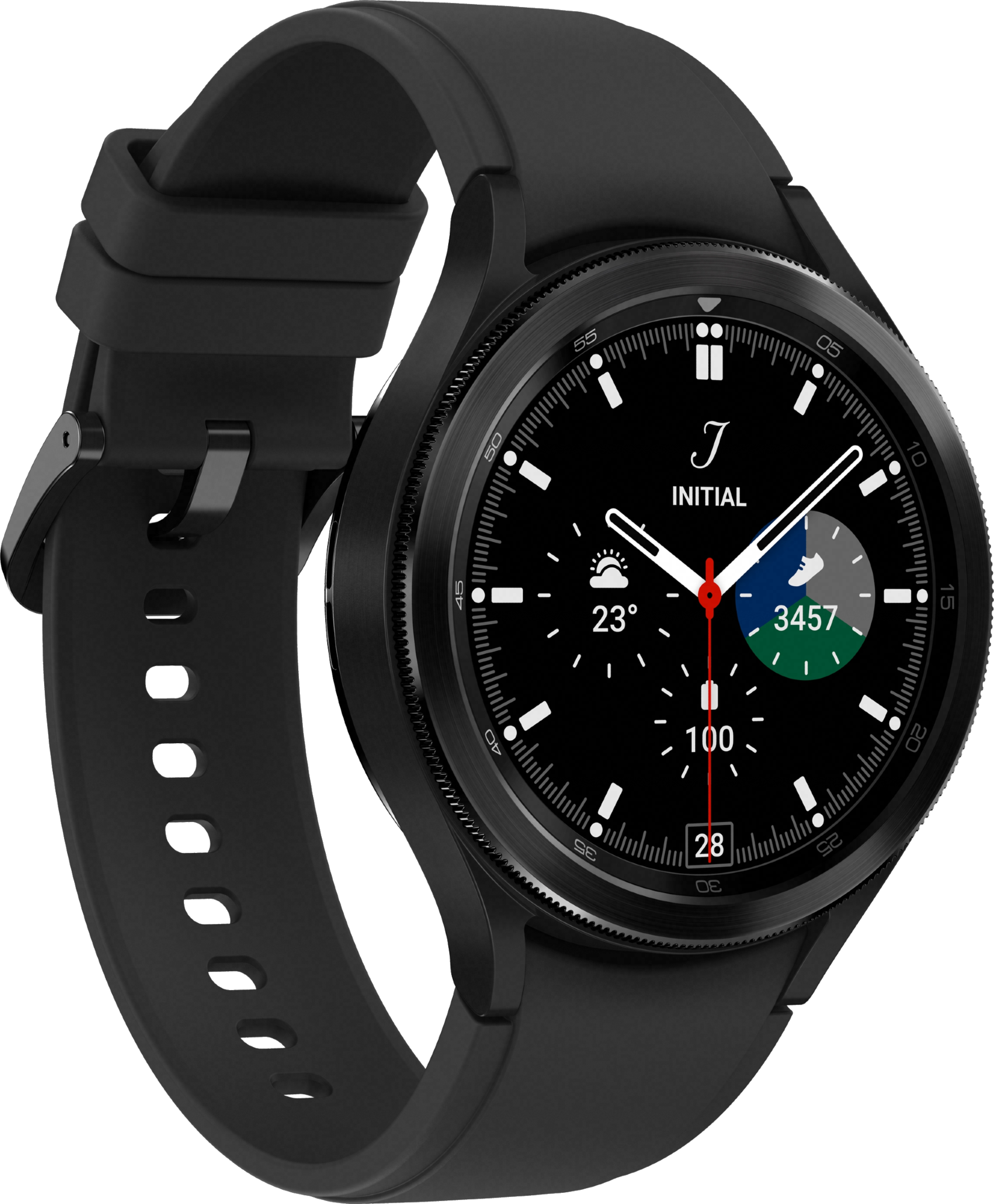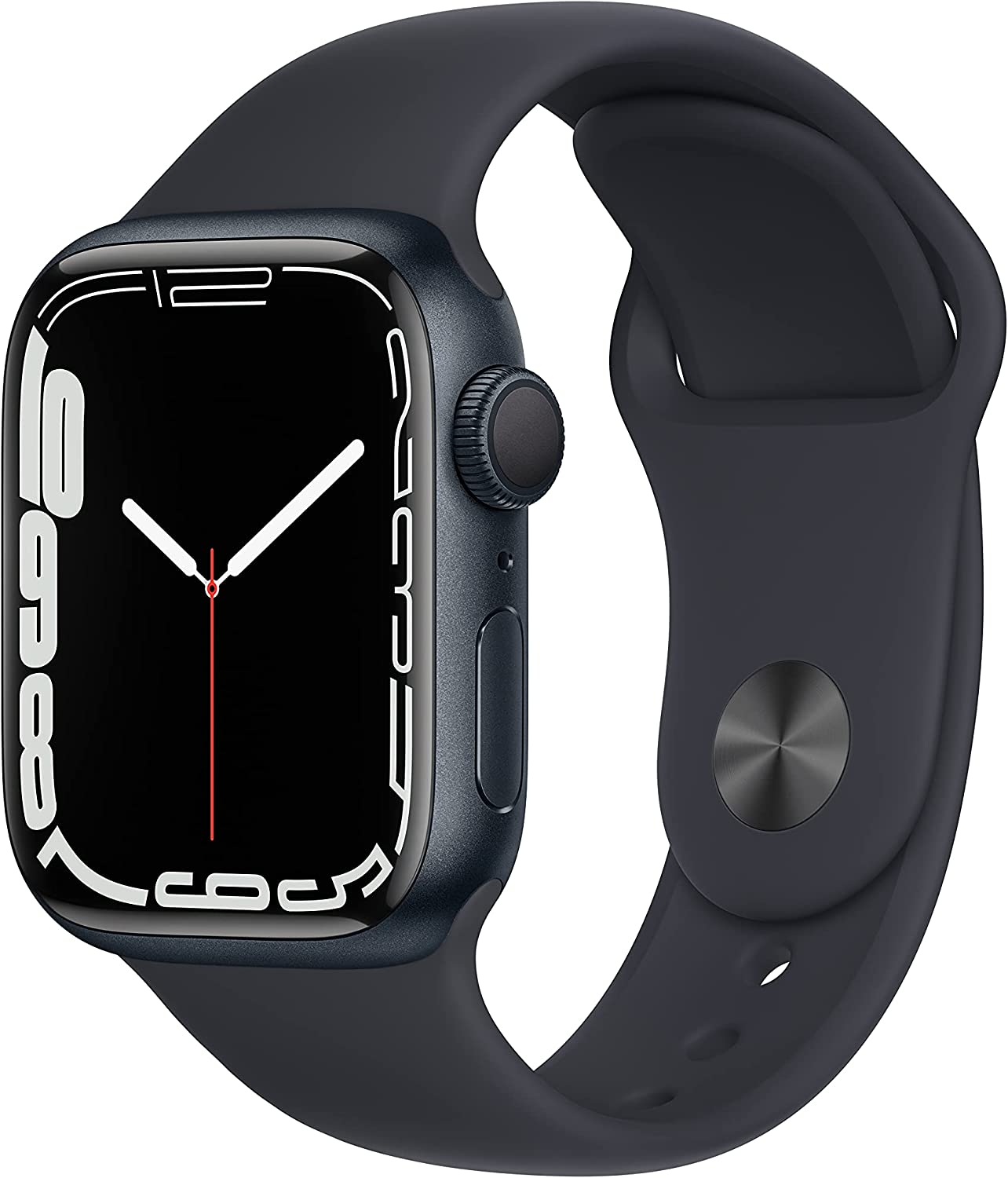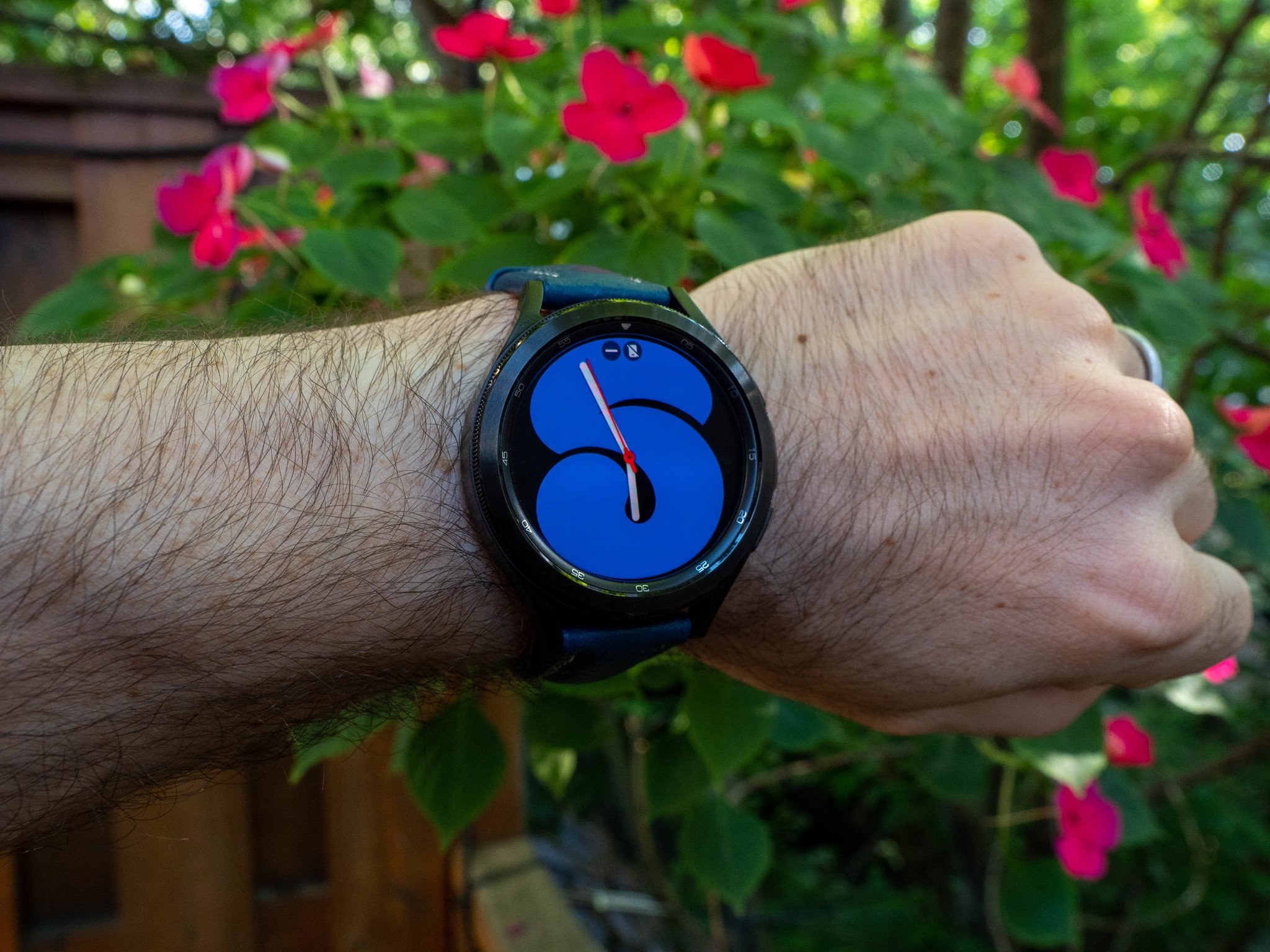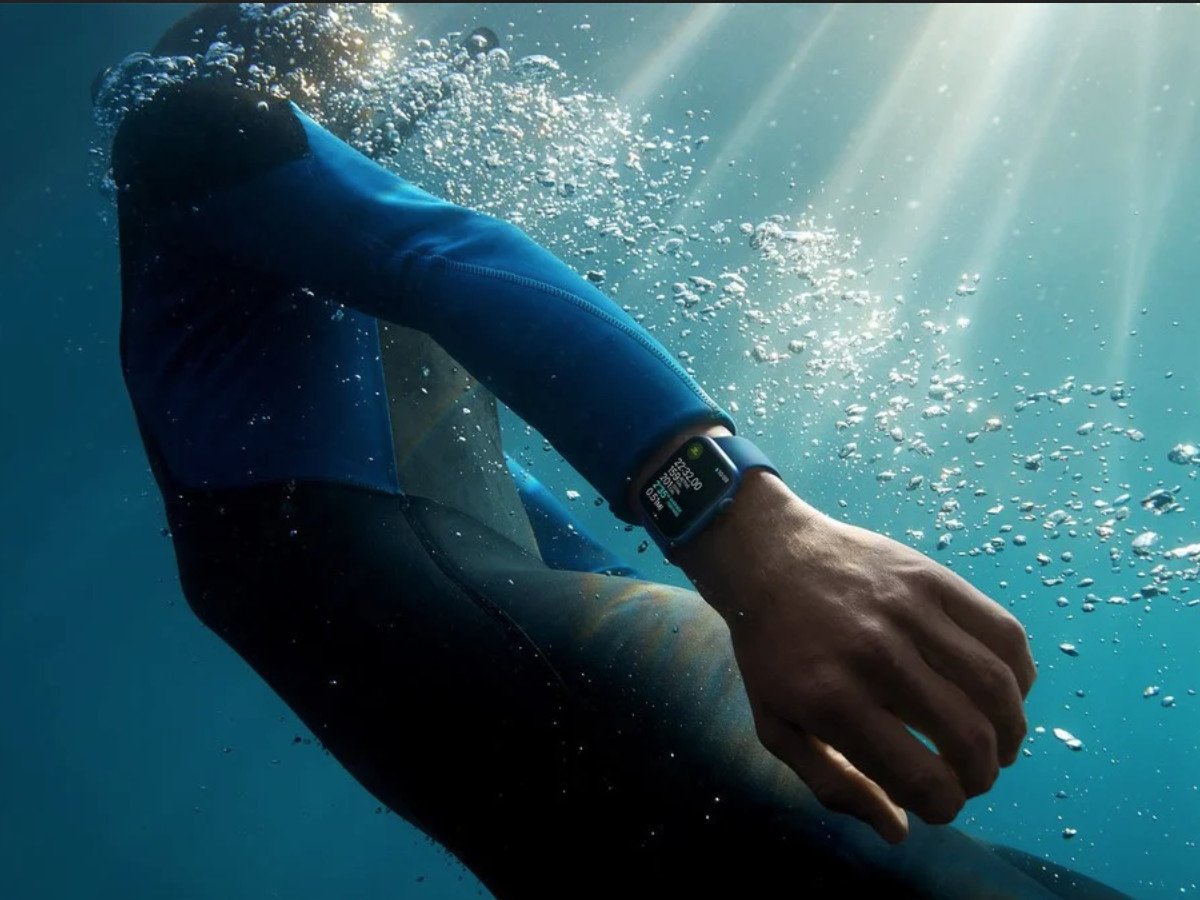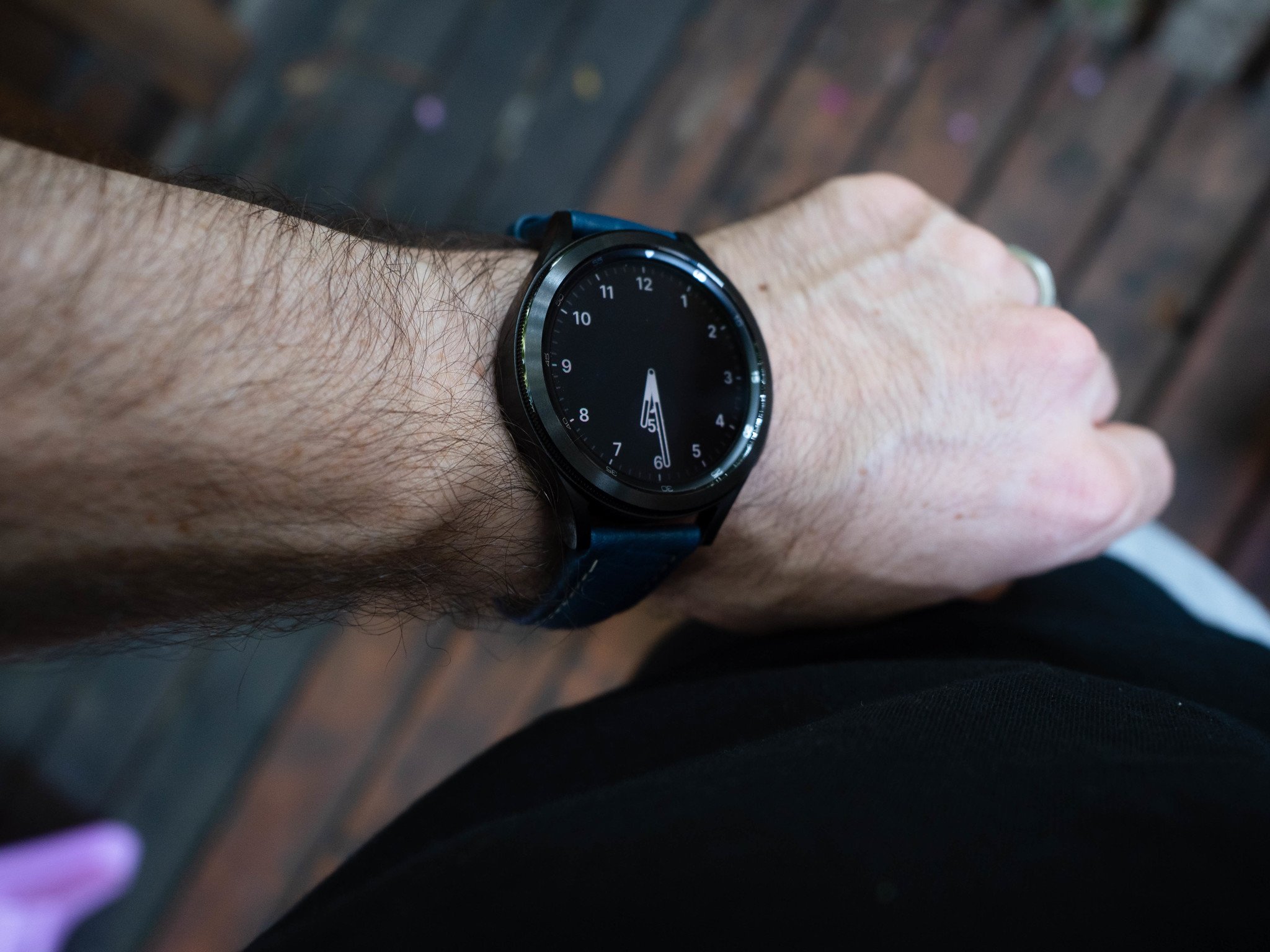A highly improved classic
Samsung Galaxy Watch 4 Classic
Pros
- Built-in GPS
- Optional LTE
- Advanced health sensors
- New Wear OS 3 platform
- Improved performance
Cons
- Lacks fast charging
- No iOS compatibility
The Samsung Galaxy Watch 4 Classic is one of the best Android smartwatches you can buy right now for many reasons. Not only is it classy, but it's packed with useful features. It's the first Wear OS 3 watch, too. You'll enjoy smooth performance, advanced health sensors, and more.
Some old, some new
Apple Watch Series 7
Pros
- Built-in GPS
- Optional LTE
- Bigger displays
- Fast charging
- Full keyboard
Cons
- Battery life hasn't improved
- No Android compatibility
While the Apple Watch Series 7 isn't a huge departure from its predecessor, users might appreciate some subtle improvements. For starters, the bezels are thinner, and the displays are larger. You also get a full keyboard, five color options, and a USB-C charging cable for fast charging.
Samsung Galaxy Watch 4 Classic vs. Apple Watch Series 7: Pick your upgrade
Choosing between Apple and Samsung is like choosing between apples and oranges. They're both smartwatches, but they cater to different crowds. If you're an Android user who's looking for a solid upgrade that offers a stylish aesthetic, you'll probably lean toward the Samsung Galaxy Watch 4 Classic. It comes in two sizes, has advanced health sensors, and runs on the new Wear OS 3 platform. You can rest assured this is one of the best Android smartwatches you can buy right now.
It goes without saying that iOS users will likely be more interested in the Apple Watch Series 7. After all, iOS users can't take advantage of Android smartwatches and vice versa. There are some minor improvements with the Series 7, but the health sensors and tracking features have not changed. If you're all about having the newest wearable tech, then you might be content with the minor upgrades.
The new-and-improved Samsung Galaxy Watch 4 Classic brings a lot to the table
The Galaxy Watch lineup has been around for a while now. Samsung always makes an effort to improve each new release, but the Galaxy Watch 4 Classic takes it to a whole new level. An upgrade from the Galaxy Watch 3, the Galaxy Watch 4 Classic brings a lot to the table. There are two case size options: 42mm and 46mm. Most users will love the physical rotating bezel that allows for smooth and easy navigation.
Both cases are available in a sleek yet durable stainless steel finish. If you want a lightweight aluminum model, you'll have to consider the standard Galaxy Watch 4, which comes in 40mm and 44mm variants. Additionally, the standard model has a capacitive bezel instead of a physical one. Keep in mind the Galaxy Watch 4 Classic only comes in black and silver.
| Samsung Galaxy Watch 4 Classic | Apple Watch Series 7 | |
|---|---|---|
| Dimensions | 41.5 x 41.5 x 11.2mm 45.5 x 45.5 x 11.0mm |
41 x 35 x 10.7mm 45 x 38 x 10.7mm |
| Display | 1.2-inch Super AMOLED, 396x396 1.4-inch Super AMOLED, 450x450 |
1.8-inch Retina display, 352x430 1.9-inch Retina display, 396 x 484 |
| Sensors | BioActive sensor (HRM), ECG, accelerometer, gyroscope, geomagnetic, barometer, ambient light sensor | HRM, accelerometer, altimeter, compass, gyroscope, pulse oximeter, ECG, thermometer, ambient light sensor |
| Connectivity | Bluetooth 5.0, Wi-Fi, optional LTE | Bluetooth 5.0, Wi-Fi, optional LTE |
| Battery life | 40 hours | 18 hours |
| Internal Storage | 16GB | 32GB |
| Water resistance | 5ATM+ IP68 / MIL-STD-810G | 5ATM |
| ECG | ✔️ | ✔️ |
| SpO2 | ✔️ | ✔️ |
| NFC | ✔️ | ✔️ |
| Optional LTE | ✔️ | ✔️ |
When comparing the Samsung Galaxy Watch 4 Classic and Apple Watch Series 7, battery life is a key factor to consider. It may not be significantly better, but the Galaxy Watch 4 Classic does offer better battery life than its competitor. Rather than 18 hours, you'll get around 40 hours of battery life. This means you can expect to charge every other day or so, depending on your usage. The drawback is that you won't have a fast charging cable, so you can expect it to take longer to reach a full charge.
Many watches claim to offer faster and better performance, but they never live up to these claims. Fortunately, this isn't something you have to worry about with the Samsung Galaxy Watch 4 Classic. The new model offers 1.5GB of RAM and 16GB of storage. When you pair that with the new Exynos SoC that provides a 20% CPU improvement, you'll have a front-row seat to the ultra-smooth performance.
The Galaxy Watch 4 Classic is equipped with a 3-in-1 BioActive sensor that houses multiple chips in one.
One of the biggest improvements has to do with the health sensors. The Galaxy Watch lineup is no stranger to advanced health tracking, but there's more to it with the new models. The Galaxy Watch 4 Classic is equipped with a three-in-one BioActive sensor that houses multiple chips in one. You'll still be able to take numerous measurements, including ECG, heart rate, blood oxygen, and Bioelectrical Impedance Analysis (BIA).
On that note, the BIA is a new addition. This feature is designed to provide users with a better understanding of their overall well-being. You'll be able to view key health metrics such as body fat percentage, skeletal muscle mass, basal, and metabolic rate. Once you weigh yourself on a scale, you enter your weight into the Body Composition app and take a reading. Simply place your middle and ring fingers lightly against the side keys with your palm facing up. In 15 seconds, you'll receive your reading.
We'd be remiss not to mention the introduction of Wear OS 3 on the Samsung Galaxy Watch 4 Classic. You'll have access to new features that aren't available on the company's previous platform, Tizen OS. For instance, you can use Google Assistant and Google Pay. You'll also have access to a wider app selection, thanks to the Google Play Store.
The Apple Watch Series 7 offers a few improvements, but are they worth it?
If you've only just started to enjoy your Apple Watch Series 6, you might be stressing over whether you should upgrade to the new Apple Watch Series 7. Some people upgrade regardless of how big or small the improvements are, but others may want to decide if it's really worth it. That may be a topic of much debate among Apple users. There aren't any new health sensors or fitness features, so that's something to keep in mind.
One of the most significant improvements on the Apple Watch Series 7 is the physical design. Apple has introduced larger case sizes this time, including the 41mm and 45mm options. With these bigger cases, users will also have slimmer bezels and larger display areas. You'll also have five different color options when choosing an aluminum model: midnight, starlight, green, blue, and (PRODUCT)RED.
Apple increased the always-on display brightness by 70% when indoors.
While a larger display may not seem like a big deal, there are some other benefits. For example, Apple increased the always-on display brightness by 70% when indoors. It can also fit 50% more text on its display than its predecessor. Another improvement that stems from the more prominent display is a full QWERTY keyboard. Thanks to the QuickPath feature, you can either tap or slide from one letter to the next when typing.
If you're a rugged adventurer, you'll appreciate that the Apple Watch Series 7 offers a front crystal that's 50% thicker than past models, which means better strength and durability. There's also an IP6X rating, which means the watch is dust resistant. So while it's not as impressive as the military-grade durability rating on the Samsung Galaxy Watch 4 Classic, it's an improvement in the Apple world.
As far as functionality goes, the Apple Watch Series 6 now provides faster charging thanks to the new USB-C cable. While this doesn't change the disappointing 18-hour battery life, it does mean you can take your dead Apple Watch from 0 to 80% in 45 minutes. So when you're in a hurry, a mere 8 minutes of charging will get you 8 hours of battery life.
When you put all these minor improvements together, it might be enough for some people to consider upgrading to the Apple Watch Series 7. With that said, you won't get any new sensors or tracking perks on this model. If you've been perfectly happy with your Apple Watch Series 6, it may not be worth the extra money.
Samsung Galaxy Watch 4 Classic vs. Apple Watch Series 7: Which should you buy?
One of the main determining factors when choosing between the Samsung Galaxy Watch 4 Classic and Apple Watch Series 7 will come down to your preferred operating system. Some Apple users may be willing to buy the Series 7 for the few upgrades it offers. You get a refined design with a larger display, a full keyboard, faster charging, and better brightness indoors. However, if these features aren't important to you, then you might want to stick with your older Apple Watch.
For Android users, the Samsung Galaxy Watch 4 Classic will likely be a worthwhile investment. You get a better design, improved health sensors, and you'll be one of the first Wear OS 3 users. It's more expensive than the standard Galaxy Watch 4 model. The only difference between the two is you get larger case sizes and physical bezels with the Watch 4 Classic. If you're a fan of smarts and style, this might just be the watch for you.
A highly improved classic
Samsung Galaxy Watch 4 Classic
A lot to love
From $295 at Samsung From $350 at Amazon From $350 at Best Buy
As far as upgrades are concerned, the Samsung Galaxy Watch 4 Classic takes the cake over the Apple Watch. There's a new operating system, advanced health sensors, and better performance. If you want a watch that can do it all, you may have met your match.
Some old, some new
Apple Watch Series 7
Small yet expensive improvements
From $399 at Apple From $399 at Best Buy From $399 at Walmart
By now, we know that upgrades in the Apple Watch lineup are a hit or miss. Sure, the Series 7 has made some improvements, but whether they're worth the price tag is up for debate. If you want faster charging and a bigger display, you might be sold.
Source: androidcentral
